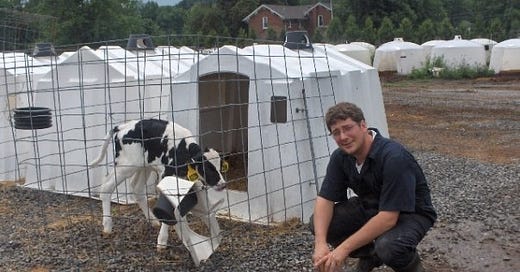The Big Question: What kind of vet will you be?
The words of a naive vet student remain relevant today
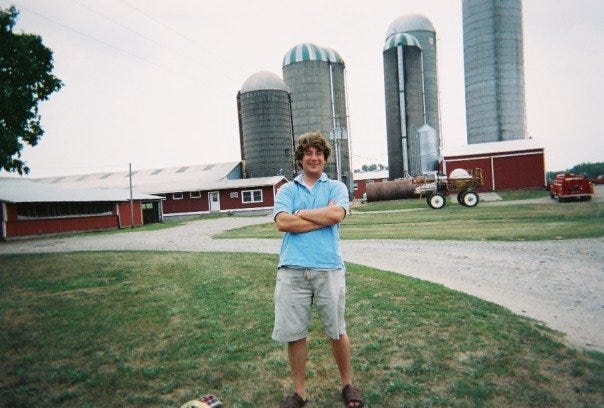
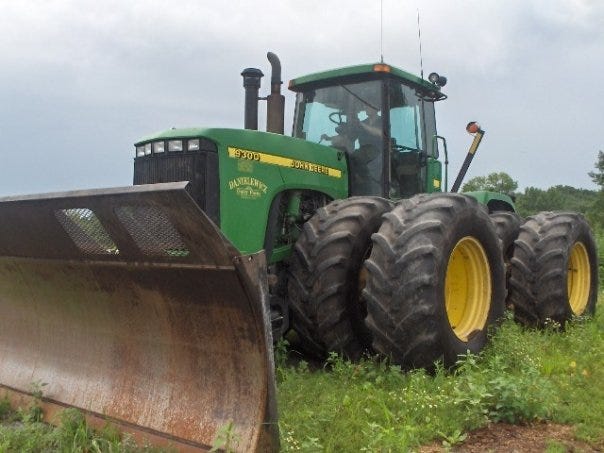
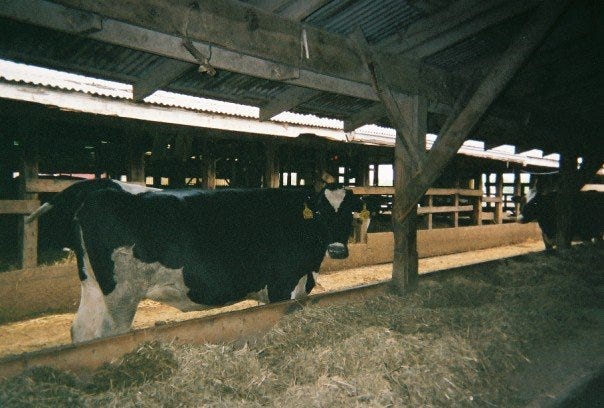
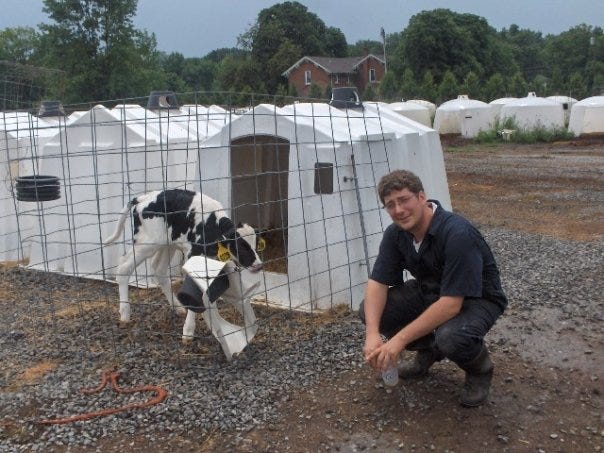
Dear Readers,
After my last post discussing the discovery of my old college blog, I went digging through the Internet Wayback Machine to see if I could find any of the original posts. As luck would have it, some of them were indeed archived! The article below was published in Progressive Dairyman (now rebranded Progressive Dairy) in September 2008, and I cross-posted it to My Cat Ate My Homework. I believe this is the first piece of writing I ever had published in a magazine or trade periodical. Overall, I think it has aged fairly well, and the issues I bring up remain relevant 17 years later. The fact that I ultimately chose to focus on small animal medicine instead of large animal practice exemplifies these problems.
—Eric
“So, what kind of vet do you want to be: large or small animal?”
That’s the question that inevitably comes up whenever people find out that I’m going to vet school. It might seem like an easy question to answer, but there’s more to it than whether I prefer cows and horses or dogs and cats. The question brings up issues beneath the surface, like potential salary, educational loans, opportunity for advancement, typical schedule and benefits like health insurance.
Young, idealistic students don’t like to discuss these sticky financial matters. I find that the notion of entering a career for money is more upsetting to my vet student peers than those in other graduate fields. We cling to the idea that the one and only reason anyone goes into veterinary medicine is “Because I love animals!” No one wants to be labeled a “sell-out.”
And indeed, any focus on money seemed troubling to me until the last six months or so when I had to get my financial house in order by completing exit interviews for loans from Cornell and signing off new loans to pay for vet school at Western University. After graduating with a bachelor’s degree in animal science, I owe $33,000 to the federal government and Cornell. I was one of the lucky ones to get grants, scholarships and subsidized direct loans because of financial need. But as I’m now finding out, any financial assistance in professional school beyond loans is rare.
Western calculated the first-year student’s budget at $61,609. To borrow less than that, I scaled way back on my personal expenses, travel costs and food budget. I still had to take out a $55,000 unsubsidized loan for my first year. For the sake of this article, let’s assume I take out the same amount for each of four years at Western University and add my Cornell debt. I would owe $253,000 upon receiving my doctorate in veterinary medicine (DVM). That’s an awfully scary number for a young person, especially in today’s economy.
But this isn’t an article just about my loans. It’s about vet students all across the country and their career choices in graduate school. It’s about the plummeting number of large animal vets in every sector of agriculture from beef and dairy to equine and poultry. As older farm vets retire, new DVM graduates simply aren’t going into production medicine to fill their shoes.
Readers of this publication are no doubt aware that dairymen across the country are having a hard time finding vets to treat their cows. Due to constant traveling between isolated farms and a shrinking overall supply of vets, many dairies are unable to reach a vet for emergencies until it’s too late. Often a cow that could have easily been saved gets euthanized, instead.
According to a 2006 press release by the American Veterinary Medical Association (AVMA), food animal veterinary trends predict a 12 to 13 percent rise in demand for dairy, poultry and beef vets between now and 2016. Unfortunately, that press release also forecasts a 4 to 5 percent annual drop in practicing food vets. As older large animal veterinarians retire, fewer new graduates are replacing them.
What’s driving my peers away from food animal medicine? The 2006 AVMA report concludes that the primary reason new graduates opt out of production animal medicine is financial concerns – particularly the debt-to-salary ratio. More than half of graduating veterinary students owe over $109,000 in educational debt [EJF: That number has risen to $169,000 in 2024], according to the DVM Newsmagazine’s March 2008 story, “Economic Emergency.” That same article lists some other interesting facts, such as veterinary school tuition nationwide increasing 100 percent since 1997, while vet salaries only rose 46.5 percent during the same time period.
Such economic problems affect all branches of veterinary medicine, but are particularly felt among dairy, beef and poultry vets. For one thing, large animal vets usually see less clients a day than their small animal counterparts because production vets must drive to each farm, while small animal vets have a centralized clinic that can crank out office calls. Another issue, from my personal experience, is that large dairies are increasingly having farmhands do jobs previously performed by vets, such as vaccinating herds, delivering calves, dehorning heifers and administering intravenous antibiotics. Certainly, such displacement of labor is an economic necessity for farms, but it still chips away at a large animal veterinarian’s salary.
Finances alone, however, don’t keep students away from farm medicine. A myriad of other factors contributed to this shortage, from less focus on large animal medicine in vet school, to a lack of role models in food production, to an increasingly suburban and urban population. These three issues are linked by the common need to draw students from non-rural/farm backgrounds into food animal medicine.
In the past, when the U.S. had a large base of young people from rural and agricultural backgrounds, vet schools were able to tap into those students to fill the ranks of large animal veterinary medicine. Now that demographics are changing, vet schools, farmers and youth groups, like the 4-H program, are going to have to aggressively recruit from cities and suburbs.
When I went to get dairy experience for vet school, I had difficulty finding a farm that would hire a college student with minimal farm experience, even with help from Cornell Cooperative Extension. Some of the farmers I called on the phone were downright rude. Others never returned my calls. Luckily, I found a wonderful dairy farm in western New York on Lake Ontario that would give me a chance. I spent the summer as a calf-feeder who also took care of the dry cows and did odd jobs. I loved the experience, and it made me go back for more dairy work the following year. But I would have never been exposed to a large dairy operation if some farmers didn’t take me on, train me and allow me to learn.
One worker at a dairy I spent time on joked, “Our goal this summer is to get you to stay away from large animal medicine!” It was all in good fun. I laughed along with them, but there was an underlying truth to the joke: “Suburban kids can’t handle, and won’t like, farm life.” To be the judge of that you have to let them try it, first.
“Our goal this summer is to get you to stay away from large animal medicine!”
I encourage more dairymen to offer jobs to any qualified students who seek employment. I also encourage farmers to get involved with organizations like 4-H and their university cooperative extension program because these groups provide agricultural networking.
I wrote this article to relate my experiences to the growing shortage of dairy vets. I hope I’ve highlighted the financial worries young vet students have in a way that is neither preachy nor whiny. The debt issue isn’t hopeless, but young students need encouragement and support. Most of all, I hope that the dairymen and veterinarians who read this are inspired to foster a pride and joy in dairy farming among teenagers and college students, so that some of them may decide they like agriculture enough to become a food production veterinarian.
So what kind of vet do I want to be? Small or large animal? I never answered that initial question. The truth is, I honestly don’t know. I’ve spent more time working on dairy farms than in small animal clinics, and I enjoy rural living away from the noise of the suburbs. My coursework at Cornell focused on ruminant nutrition and reproduction. I feel very much at home with large animal agriculture. On the other hand, I’ve been a lifelong pet owner who adores cats and dogs. And small animal practice always has the lure of a “normal” work week.
It’s going to be an interesting four years as I study in vet school and ponder my options.

